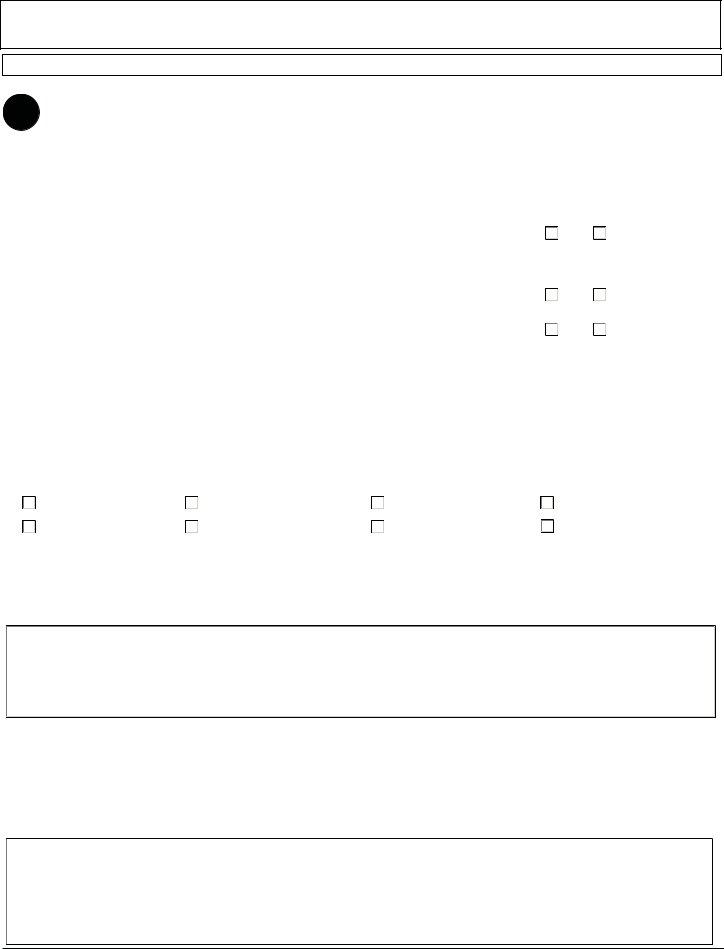The Pro 6 Evaluation Team Report (ETR) serves as a crucial document in determining the special education and related services eligibility for children within the educational system. Crafted to offer a comprehensive overview of a child's abilities, needs, and the evaluation process, it includes critical sections covering everything from individual evaluator assessments to eligibility determination. Detailed within the form are sections designed to capture the child's background, including basic personal information, and the concerns leading to the evaluation, whether it's an initial evaluation or a reevaluation. Each evaluator involved contributes to the assessment, highlighting areas such as vision, hearing, and intellectual ability, using a variety of evaluation methods and strategies. Summaries of these assessments form the basis of a team summary, which is pivotal for understanding the child's educational needs and planning instruction and progress monitoring. Specifically, for cases where a specific learning disability is suspected, dedicated documentation is required to guide eligibility decisions. What's notable about the ETR process is its collaborative approach, ensuring that a team of professionals, alongside the child's parents or guardians, are involved in reviewing all pertinent information. This careful deliberation culminates in a decision regarding the child's eligibility for special education, which is documented in the final sections of the form, with provisions for dissenting opinions among team members. This form represents a structured attempt by the Ohio Department of Education, as indicated by its revision date on April 4, 2009, to standardize the evaluation process across districts, ensuring fairness and thoroughness in assessing each child's unique educational requirements.
| Question | Answer |
|---|---|
| Form Name | Pro 6 Etr Form |
| Form Length | 12 pages |
| Fillable? | No |
| Fillable fields | 0 |
| Avg. time to fill out | 3 min |
| Other names | etr form printable, etr form online, etr evaluation form, evaluation team form pdf |

ETR Evaluation Team Report
CHILD'S INFORMATION:
CHILD'S NAME: |
|
ID NUMBER: |
||||||||
|
|
|
|
|
|
|
|
|
|
|
STREET: |
|
GENDER: |
|
|||||||
|
|
|
|
|
|
|
|
|
|
|
CITY: |
|
|
|
|||||||
STATE: OH |
ZIP: |
|||||||||
|
|
|
|
|
|
|
|
|
||
DATE OF BIRTH: |
|
|
|
|
|
|
|
|||
DISTRICT OF RESIDENCE:
DISTRICT OF SERVICE:
PARENTS'/GUARDIAN INFORMATION
NAME: |
|
|
|
|
|
|
|
|
||||||||
STREET: |
|
|
|
|
|
|
|
|
||||||||
CITY: |
|
STATE: OH |
ZIP: |
|||||||||||||
|
|
|
|
|
|
|
|
|
|
|
|
|
|
|||
HOME PHONE: |
|
WORK PHONE: |
|
|||||||||||||
CELL PHONE: |
|
EMAIL: |
|
|||||||||||||
NAME: |
|
|
|
|
|
|
|
|
||||||||
STREET: |
|
|
|
|
|
|
|
|
||||||||
CITY: |
|
STATE: OH |
ZIP: |
|||||||||||||
|
|
|
|
|
|
|
||||||||||
HOME PHONE: |
|
WORK PHONE: |
||||||||||||||
CELL PHONE: |
|
EMAIL: |
|
|||||||||||||
TYPE OF EVALUATION:
INITIAL EVALUATION |
REEVALUATION |
GRADE:
DATES
DATE OF MEETING:
DATE OF LAST ETR:
REFERRAL DATE:
DATE PARENTS
CONSENT RECEIVED:
ETR FORM STATUS
PART 1: INDIVIDUAL EVALUATOR'S ASSESSMENT (Separate Assessment from each Evaluator)
PART 2: TEAM SUMMARY
PART 3: DOCUMENTATION FOR DETERMINING THE EXISTENCE OF A SPECIFIC LEARNING DISABILITY PART 4: ELIGIBILITY
PART 5. SIGNATURES
INSTRUCTIONS
There are four parts to this form, i.e., Part 1,2,3 and 4. Parts 1,2 and 4 must be completed for all initial evaluations and reevaluations. Part 3 must be completed for initial evaluations if the suspected area of disability is Specific Learning Disability. Part 3 must be completed for reevaluations if the child is currently a child identified as having a specific learning disability or the team is considering a change in the child's disability category to Specific Learning Disability.
In Part 1 each member of the evaluation team will list in the “Areas of Assessment” box the area or areas that they will be assessing, i.e., vision, hearing, fine motor, gross motor, emotional/behavioral or intellectual ability. The evaluator will also provide, in Part 1, the evaluation method and strategies used to conduct the assessment by checking the appropriate boxes. A detailed summary of the results of the assessment or assessments will be provided in the “Summary of Assessment Results” section. The evaluator will sign their assessment page and include his or her position title. The date on this section will be the date the evaluator completed his or her assessment.
Part 2 will be completed by the team chair or district representative by gathering all team members' assessments (Part 1) and summarizing them in the boxes provided in Part 2. The interventions summary is completed for both initial evaluations and reevaluations per the instructions found on the form and in Procedures and Guidance for Ohio Educational Agencies serving Children with Disabilities. The reason(s) for the evaluation is also completed for both initial and reevaluations. The summary of information provided by the parents of the child will include information from the referral form as well as any information provided by the parent through behavioral checklists, interviews or meetings, outside evaluations.
Once all assessment information is gathered and summarized, the team will meet and review all information. The team will then describe the child's educational needs based on the information gathered, and state the implications for instruction and progress monitoring in the appropriate text box.
The team will then consider whether or not the child may have a specific learning disability based on the elements found in Part 3. If no one suspects a disability under this category, the team may skip Part 3 and move into Part 4.
In Part 4 the team determines whether or not the child is eligible for special education and related services by addressing each of the statements found in this section. The final text box in this section is completed with the information that supports the team's eligibility determination. All members of the team sign the report at the conclusion of this section. If any team member disagrees with the team's determination, the team member must attach a written statement of disagreement to the report.
|
|
|
PR0 6- ETR FORM REVISED BY ODE: APRIL 4 , 2009 |
PAGE 1 of 10 |
|

ETR Evaluation Team Report
CHILD'S NAME:ID NUMBER:DATE OF BIRTH:
1 |
INDIVIDUAL EVALUATOR'S ASSESSMENT |
Section to be completed by each individual evaluator |
EVALUATOR NAME:
POSITION:
AREAS OF ASSESSMENT:
Indicate the area(s) that were assessed by the evaluator in accordance with the evaluation plan.
EVALUATION METHODS AND STRATEGIES
Indicate the types of assessment strategies used to gather information about the child's performance
OBSERVATIONS
INTERVIEWS
REVIEW OF RECORDS AND RELEVANT TREND DATA (SCHOOL RECORDS, WORK
SAMPLES, EDUCATIONAL HISTORY)
SCIENTIFIC, |
||
INTERVENTIONS |
||
|
||
CURRICULUM BASED ASSESSMENTS |
CLASSROOM BASED ASSESSMENTS |
|
OTHER (Specify) |
|
ASSESSMENT INFORMATION
Provide a summary of the information obtained from the assessment results per the evaluation plan including the child's strengths, areas of need and baseline data
SUMMARY OF ASSESSMENT RESULTS:
DESCRIPTION OF EDUCATIONAL NEEDS:
IMPLICATIONS FOR INSTRUCTION AND PROGRESS MONITORING:
Evaluator's Signature: |
|
Date: |
|
|
|
|
|
|
PR0 6- ETR FORM REVISED BY ODE: APRIL 4 , 2009 |
PAGE 2 of 10 |
|

ETR Evaluation Team Report
CHILD'S NAME: |
ID NUMBER: |
DATE OF BIRTH: |
|
|
|
2 TEAM SUMMARY |
|
|
Combine all Part 1's Individual Evaluator's Assessment from all evaluators into team summary
INTERVENTIONS SUMMARY
Provide a summary of all interventions done prior to the child's referral for an evaluation or done as part of the initial evaluation. For all reevaluations provide a summary of interventions routinely provided to this child.
REASON(S) FOR EVALUATION:
SUMMARY OF INFORMATION PROVIDED BY PARENTS OF THE CHILD:
SUMMARY OF OBSERVATIONS: (only required for preschool and SLD)
|
|
|
PR0 6- ETR FORM REVISED BY ODE: APRIL 4 , 2009 |
PAGE 3 of 10 |
|

ETR Evaluation Team Report
CHILD'S NAME: |
ID NUMBER: |
DATE OF BIRTH: |
|
|
|
MEDICAL INFORMATION:
SUMMARY OF ASSESSMENT RESULTS:
DESCRIPTION OF EDUCATIONAL NEEDS:
IMPLICATIONS FOR INSTRUCTION AND PROGRESS MONITORING:
|
|
|
PR0 6- ETR FORM REVISED BY ODE: APRIL 4 , 2009 |
PAGE 4 of 10 |
|

ETR Evaluation Team Report
CHILD'S NAME:ID NUMBER:DATE OF BIRTH:
3 DOCUMENTATION FOR DETERMINING THE EXISTENCE OF
A SPECIFIC LEARNING DISABILITY
REQUIRED NOTIFICATION
If the child has participated in a process that assesses the child's response to scientific, research based intervention, indicate if the parents were notified about the following prior to the evaluation:
The state's policies regarding the amount and nature of student performance data that |
YES |
NO |
|
||
would be collected and the general services that would be provided. (See Procedures |
|
|
and Guidance for Ohio Educational Agencies serving Children with Disabilities)
Strategies for increasing the child's rate of learning |
YES |
NO |
|
||
The parents right to request an evaluation |
YES |
NO |
|
||
Section A must be completed |
|
|
Either Section B or Section C must be completed |
|
|
A. IDENTIFIED AREAS
Identify one or more of the following areas in which the team has determined that the child is not achieving adequately for the child's age or
Oral Expression |
Reading Fluency Skills |
Written Expression |
Mathematics Calculation |
Listening Comprehension |
Reading Comprehension |
Basic Reading Skill |
Mathematics Problem solving |
|
|
|
|
B. RESPONSE TO SCIENTIFIC,
Assessment information should be summarized in this section if the evaluation team used a process based on a child's response to scientific,
C. PATTERNS OF STRENGTHS AND WEAKNESSES
Assessment information should be summarized in this section, if the evaluation team used alternative
|
|
|
PR0 6- ETR FORM REVISED BY ODE: APRIL 4 , 2009 |
PAGE 5 of 10 |
|